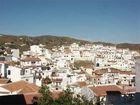
This route is so named for the innumerable paseros (or raisin drying beds) of which it is composed,strung out on gentle slopes orientated towards the south.Its home produced wine is quite well appreciated especially the Muscatel.
The former inhabitants of the region, of Islamic origin, left an immense cultural heritage, reflected in its marvellous buildings; all of the villages of which the route is composed preserve parochial churches with their respective minaret towers. As well as which they had an interesting agricultural activity which is still practiced today,with great respect for tradition. The cultivation of the raisin which is especially localised in this region of the centre of Axarquia has a typically sweet taste,owing to the geographic location and climate of the place.This fruit has distinct sizes: small, normal, large and extra and production is around 200,000 kilograms of raisins. The route commences in Moclinejo,a town which,centuries ago was the protagonist of an uprising against Christian troops, an event which passed into history with the name of the Battle of Axarquia.Following the path which is marked out for us by the 'paseros' one arrives at Almachar,where the traveller may enjoy its exquisite 'ajoblanco' or cold garlic soup. El Borge, situated at only 2.5 kilometres from Almachar,assumed the leadership as the focus of the rebellion during the above cited moorish uprising.This rebellious character of the town was still found alive some centuries afterwards in the figure of one of the most famous bandoleros of Malaga "El Bizco de Borge." (The cross-eyed one from Borge.)Very near to the 1,020 metres of the Pico Santopitar,beneath the attentive gaze of the Pico de la Maroma, is situated Cutar which, as well as being distiguished by its grapes and raisins, is also the cradle of an excellent olive oil. Comares is known as the Balcon de Axarquia,because of the splendid views which the town commands.This exceptional situation conferred an important role on it in the times of the re-conquest; two towers still remain of its ancient castle in the highest part of the town. Lastly,Totalan, vine country, is also a place with history,witness of important episodes in the bloody struggle between Muslims and Christians.
| 
